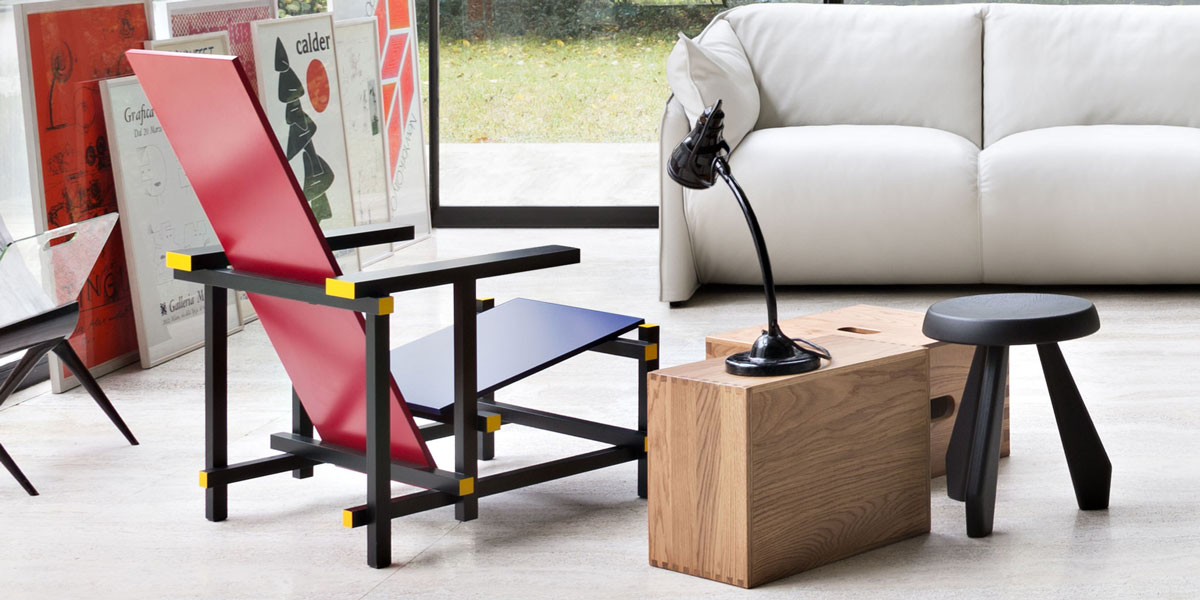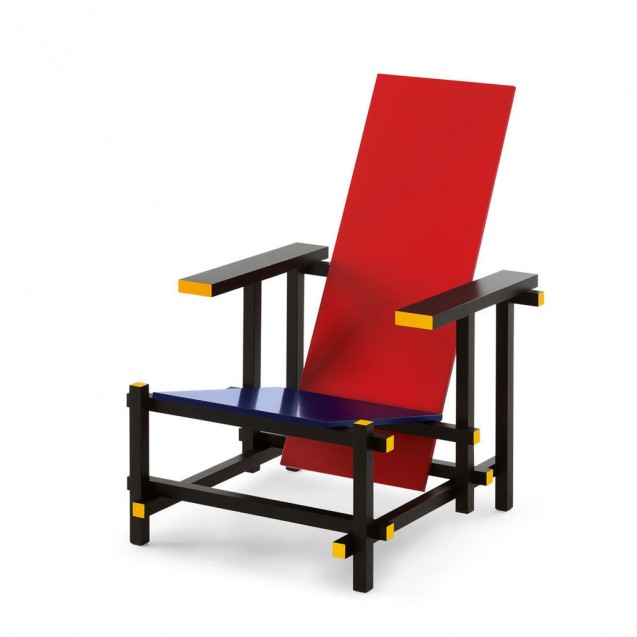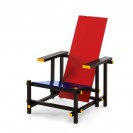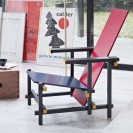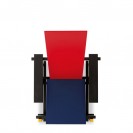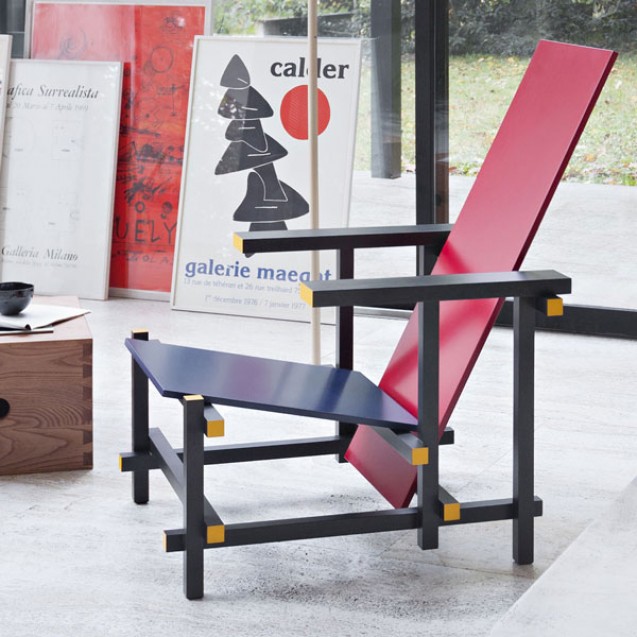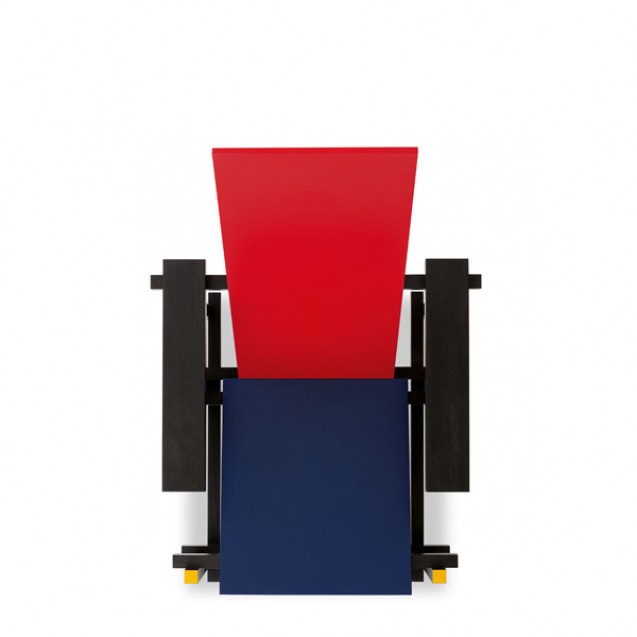635 Red And Blue
A sculptural seat with a pure
and rationalist form, this chair became an authentic Manifesto for
Neoplasticism, embraced by the Dutch De Stijl movement in 1917. An outlook
shared by Piet Mondrian, whose objective was to seek out the essential nature
of things, combined with the harmonious equivalence of colours, and the use of
right-angle. Rietveld produced his first prototypes in 1918, expressing the
philosophy of organising space using the same colours for similar components.
He later applied this same approach to separate out constructional elements
according to their function. Thus the base was black, and the seats coloured.
As a consequence, the name of the piece changed, from Slat Chair to Red and
Blue.
| About Designer | |
|---|---|
Gerrit Thomas Rietveld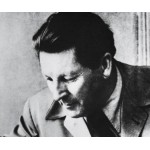 |
Gerrit Thomas Rietveld,
born in Utrecht on 24 June 1888, seems possessed of two personalities, each so
distinct that one might take his work to be that of more than one artist. The
first personality is that seen in the craftsman cabinet-maker working in a
primordial idiom, re-inventing chairs and other furniture as if no one had ever
built them before him and following a structural code all of his own; the
second is that of the architect working with elegant formulas, determined to drive
home the rationalist and neoplastic message in the context of European
architecture. The two activities alternate, overlap, and fuse in a perfect
osmosis unfolding then into a logical sequence. In 1918 Rietveld joined the “De Stijl” movement which had sprung
up around the review of that name founded the year before by Theo van Doesburg.
The group assimilated and translated into ideology certain laws on the dynamic
breakdown of compositions (carrying them to an extreme) that had already been
expressed in painting by the cubists: the “De Stijl” artists also carefully studied the
architectonic lesson taught by the great Frank Lloyd Wright, whose influence
was widely felt in Europe at that time. Collaborating first with
Robert van’t Hoff
and Vilmos Huszar, then with Theo van Doesburg and Cornelius van Eesteren,
Rietveld soon became one of the most distinguished interpreters of the
neoplastic message. Among his most important
works are:
the Schröder house at
Utrecht (1924); the “Row
Houses” at
Utrecht (1931-34); the Dutch pavilion at the Venice Biennial (1954); the
sculpture pavilion in the Rijksmuseum Kröller-Müller at Otterloo and the Van
Gogh Museum in Amsterdam (1955). Out of his equally important furniture,
Cassina has chosen for its own production: the “Red and Blue” (1918), the “Zig-Zag” (1934), the “Schröder 1” (1923), the “Utrecht” (1935) |
